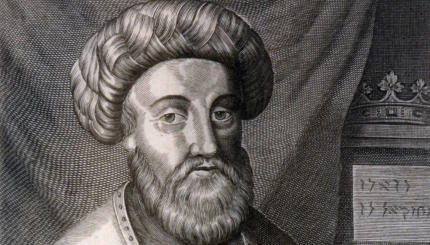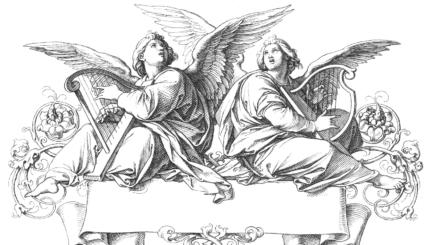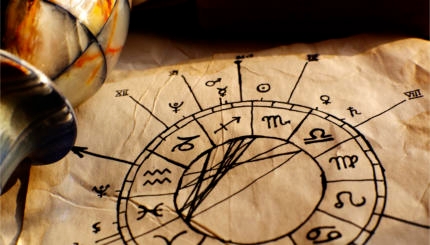In most cultures across the world, a witch or wizard is generally regarded to be a nefarious practitioner of magic. In Jewish culture, in contrast to both modern culture, which has reversed most images of evil creatures (vampires are now romantic figures, for example, instead of bloodlusting killers) and Christian culture, which sees them as virtually demonic, the Jewish attitude toward witches has varied considerably over time and geography.
The German Pietists, for example, did regard them as quasi-demons. In the 17th century, Manasseh ben Israel of Holland expressed a view of witchcraft virtually indistinguishable from contemporary Christian demonologists (Nishmat Hayyim 232). The ic rabbis, on the other hand, while not approving of witches, blithely assume most of their own wives engage in at least some witchcraft practices (Mishnah Sanhedrin 7:4, 7:11). These differences may well reflect the attitudes of the surrounding cultures in which Jews lived. Mediterranean societies were generally more tolerant of witches than northern European societies.
In the Bible
The formal biblical attitude toward wizards and witches is severe, witchcraft being a capital offense (Exodus 22:17; Leviticus 20:27; Sanhedrin 45b). This seems to spring from its association with idolatry. Both men and women are portrayed as engaging in witchcraft, and contrary to the modern distinction made in academic circles between socially empowered sorcerers and socially marginal witches, witches in the Bible are often shown in positions of power, notably the wizards in the employ of the kings of Babylon and Egypt and the witches in the employ of King Manasseh. Queen Jezebel herself is a witch (Exodus 7: 11; Daniel 2:2; II Kings 9:22, 21:2).
Little is known about biblical witchcraft. There is an oblique reference to “voodoo-like” practices (Ezekiel 13:19), but the Bible almost universally opts to remain silent on the particular practices of the witch. The Woman of Endor, often identified as a witch in Jewish post-biblical literature, is not designated so in the Bible itself so it is not clear whether necromancy was considered a discipline of witchcraft, or a wholly separate offense (Deuteronomy 18:10-12; Isaiah 8:19-22, 19:3).

Help us keep Jewish knowledge accessible to millions of people around the world.
Your donation to My Jewish Learning fuels endless journeys of Jewish discovery. With your help, My Jewish Learning can continue to provide nonstop opportunities for learning, connection and growth.
Women’s Work?
Jewish sources offer several accounts of the origins of witchcraft. According to I Enoch, witchcraft was first taught by the fallen angels to their mortal wives. This presumably explains the special association between women and witchcraft that marks subsequent Jewish literature. In the medieval text ben Sira, the first woman, Lilith, transforms herself into a demon/witch by the power of using the Tetragrammaton.
While Jews were generally regarded to be exceptional magicians and even some rabbis use incantations, potions, and healing rituals, in rabbinic literature witchcraft is most associated with women. Though there is an explicit statement that both men and women can engage in witchcraft, the fact that Exodus 22:17 prohibits mahashefah (the feminine form of the noun) is taken as a prooftext that witchcraft is a particularly feminine activity (Sanhedrin 67a).
And this is despite the existence of magical manuals such as The Sword of Moses (a medieval Hebrew manual of theurgy), which is clearly written with the assumption that the adept using it will be a man. Perhaps a distinction between learned sorcery (practiced mostly by men), and folk magic (practiced mostly by women) starts to emerge here.
Several passages of Talmud make a point of linking witchcraft with women (Avot 2:7; Eruvin 64b; Yerushalmi Avodah Zarah 1:9). In one citation, none other than Simon bar Yohai, a sage who is reported to have once used the evil eye to slay a man, makes this linkage. The practice of witchcraft was considered so pervasive among women that even the children of great sages could be involved (Gittin 45a).
In general, witches in biblical and rabbinic literature are thought to be engaged mostly in malevolent activities, from interfering with fertility and healthy births (Otzar ha-Geonim, Sotah 11) to cursing rivals and killing the unsuspecting. This stands in contrast with beneficent sorcery, such as healing rituals and amulet making, which Jewish tradition tolerates.
While there are examples recorded of “witchcraft” that serves purely utilitarian purposes (the ability to stir a boiling pot with one’s bare hand, for example), in general it is assumed witchcraft is used mostly for nefarious ends. The motivation for such behavior is rarely explicitly stated in the texts, but can be inferred. Witches seem to be a source of the evil eye, indicating they are motivated by envy and jealousy. Others use their powers for personal profit.
Punishment & Hostility
Witches are sometimes portrayed as having idiosyncratic powers: one may be able to materialize bread, another drink, etc. The Talmud recounts that Rabbi Simeon ben Shetah defeated a coven of eighty witches. First, he tricked them into demonstrating their powers, then he gained the upper hand by appealing to their lusts. He brought eighty men before them, each of whom lifted a witch from the ground, thereby robbing each of her power (a piquant detail linking ancient witchcraft with earth or, perhaps, underworld power). Enforcing the biblical penalty, ben Shetah eventually had all of them hung.
While dramatic in scale, this incident is actually the only such capital punishment of witches mentioned in the entire vast rabbinic corpus, and given its particularly legendary features, many scholars have held the historicity of the story suspect.
Aside from this one story, witches in rabbinic literature are rarely portrayed as demonic creatures, though it is not clear exactly what they are. In a virtually indecipherable tale found in the Jerusalem Talmud, Rabbi Hananiah pulls the head of a witch from flax (Sanhedrin 7:13a). In general, though, witchcraft is seen more as a vice that virtually every woman will indulge in. With few exceptions, it is regarded rather just as something inappropriate that women do.
In medieval Jewish literature of northern Europe, by contrast, the image of the witch as a purely malevolent entity comes to the forefront, perhaps reflecting the greater hostility toward witches found in Christian culture at that time (Nishmat Hayyim 232). In Sefer Hasidim, witches share attributes with werewolves and vampires: they shape-shift, fly, have bloodlust, and can become the undead (456, 465).
Yet despite this more alarming view of witches, there is no record of any large-scale witch hunts among the Jews of Europe to mirror the witch-hunting mania that seized gentile society. Perhaps the popular Christian notion of the Jew as a satanic agent made Jewish authorities leery of giving fuel to such talk with the spectacle of Jews trying other Jews on such charges.
Among the Jews of the Ottoman Empire, witches were viewed with more acceptance. Even an established kabbalist like Hayyim Vital would seek the expertise of such wise women (Sefer ha-Hezyonot 4,120).
If You’re Worried…
The threat of a witch may be deterred by reciting the following curse (Pesahim 110a): “May boiling excrement in a sieve be forced into your mouth, (you) witches! May your head go bald and carry off your crumbs; your spices be scattered, and the wind carry off the new saffron in your hands, witches!”
Seven loops of knots (tied to the left side of the body) are also a good defense against illness caused by witchcraft (Shabbat 66b).
Reprinted with permission from The Encyclopedia of Jewish Myth, Magic and Mysticism (Llewellyn Worldwide).




